
The Syrian Orthodox Church, from the blessed moments of its apostolic establishment by St Peter, has unwaveringly maintained the truth Christian faith. With all due reverence and respect to our able leader His Holiness The Patriarch Of Antioch, as well as to His Beatitude The Catholicose Of All The East, we are proud to declare that our church has completed 150 years ofsubservience and unconditional obedience to them, and all the Metropolitans they have appointed under them, in protecting the Faith of the Holy Church.
Our land has been graced by the feet of the Holy Father, the pinnacle of purity Chathuruthil Geevarghese Mar Gregorios, and has been witness to many divine miracles.
Upon this joyous occasion where our humble church is celebrating its 150th jubilee on Mazhuvannur soil,the Holy Patriarch has graciously seen fit to elevate our church to a 'Cathedral' status.
At this moment, as our proud churchtops reach up toward the endless heights of the sky, let us submit ourselves to the Will of God, and praise Him as one for His endless mercies.
The Kadamattom church is of immense importance to the Malankara church.
There are two prevailing opinions of its formation:
The families of the Kadamattom St. George Jacobite Syrian Church used to stay in areas like Mangattoor near Kolenchery,Kadakkanad, Mazhuvannur, Mangalathunada, Thattaammukal, Valambur, and Kilikulam.
Back in those days, there were no convenient transportation facilities the way we have now.
People relied on small boats and makeshift vehicles to ferry them across fields, rivers and streams.
Reaching the church of Kadamattom on time for worship, and carrying their dead brethren for burial was a problem for the believers.
Neglect and hostility from the local communities also created issues.
It so happened that Matthew Daniel from the Nedumburatthu family was ordained as deacon (Corooyo) by the Antioch delegateMar Joachim Cyril (Yuyakim Mar Koorilose), completed his theological education and was later ordained priest (Kasheesha)by Pulikkottil Joseph Mar Dionysius. However, due to the aforementioned hostility of local communities, it was only after a long periodof time that the reverend priest was able to perform the Holy Mass at the Kadamattom church.
The 300-odd people who had accompanied the priest to Kadamattom church on that day collectively decided to avoid suchcircumstances in the future, by leaving Kadamattom church and establishing a place of worship in Mazhuvannur.
Maadapparambil Vadakkekkara Varkey, Thekkekkara Tharavaattil Maatthu, Thaamarappalli Maadapparambil Kuruvilla Maani, Shraambikkal Puthenpurayil Kuru, Nedumburatthu Maatthu, Mangalatthu Paily, and Thattaayatthu Paily were among the frontmen in this initiative.
In the year 1037 (as per the Kollavarsham or Malayalam Calendar) (1861 AD), the 14th of the Malayalam month of Kanni, was a day of great joy for the people of Mazhuvannur.
It was the day of The Feast Of The Cross.
A temporary arrangement was set up for worship on the land donated by the Nedumburatthu family, and Fr. Daniel offered the holy qurbana here for the first time.
For about 31 years, the church continued its worship in this state.
During this time, the metropolitan Pulikkottil Joseph Mar Dionysius visited the Mazhuvannur church and ensured that the church had enough financial resources to receive His Holiness the Patriarch.
In 1876, in Midhunam 15,16,17, at the Mulanthuruthy Synod, the Mazhuvannur church was represented by Kulangattil Youseph Katthanaar from the clergy,and by Maadapparambil Varghese Maatthu from among the laymen.
In December 1876, during the creation of a diocese in Angamaly, Mazhuvannur church was recorded as the 21st on the list of 22 churches (as per the Kandanad Grandhaavari - Samuel Mar Dionysius).
There are six cross-mounts under the direct control of the church (called kurishin thotti in malayalam). As per the instruction of Chathuruthil Thirumeni, the Maadapparambil family built the stone cross to the west of the church. The Kulangaattil family constructed and donated the eastern cross-mount in memory of St. Baselios Eldho, with the help of the local people who were actually from other religions. Maadapparambil Baby M Matthew Tharakan donated the land for the cross mount on Library Junction, in memory of St. Peter And St. Paul. The help received from Shri M R Shankarawarrier during the initial setup of this cross-mount is worth commemorating. At the crossroads to the north of the church, the Medanappilli cross-mount was established in honour of Aluva's Valiya Thirumeni. The finances for the construction of this cross and mount was obtained by selling land donated by Kombanaal Paily Korath. The Ezhupratthil cross-mount in memory of Parumala Thirumeni was established on the land donated by Maanaatth Elias, with the help of the locals and church members. The lower cross-mount to the north of the church was constructed in honour of St George the martyr, and was completed using church funds. Apart from the aforementioned, the church also possesses four other cross-mounts adjacent to the chapels.
The sunday school, the gospel association, the women's forum, and the youth association are active functions of the church. They participate in matters of construction and charity, and also promote spiritual growth in the church. The 24 family units of the church play an important role in strengthening the church.
In accordance with a registered agreement in 1919, and the general body meeting of 1964, as well as important diocesan-level decisions taken in 2002, our church declares its unconditional subservience to The Holy See Of Antioch, and extends all its support in preserving the true faith. The church management committee consists of 20 members elected through secret ballot from the 20 wards of the church, from whom are nominated two trustees and a secretary approved by the general body of the church. The vicar and associate vicars are also involved in management. The tenure for the committee members has been fixed at 2 years.
His Holiness The Patriarch has graced our church with his apostolic blessings, his visit, the sacrament of mooron, as well as the 'cathedral' status.
We declare to him our utmost gratitude and offer our unceasing reverence and respect.
We also thank His Beatitude The Catholicose Of All The East as well as the synod secretary His Grace Joseph Mar Gregorios, and the Metropolitan of the Perumbavoor area of Angamaly diocese, His Grace Matthews Mar Aphrem. We cannot express in mere words the extent of our gratitude.
Above all, we thank The Lord Almighty, The Most Merciful One.
With humble and prayerful hearts,
The Editorial Board.
The founding vicar of our church is Rev. Fr. Matthew Daniel.
Starting from 1861, he served the church for 43 years until his death on 20 May 1904.
Following this, it was Venappaadatthu Simon Daniel who served the church and took the initiative for constructing the church building.
He was loved by all the church members.
In AD 1876 he was instated as associate vicar to Fr. Matthew Daniel, and later served as vicar until he passed away in 1918.
Rev. Fr. Matthai Geevarghese Kulangaattil was a priest for our church from 1888 onward for 20 years. He passed into heavenly abode in 1908 and was entombed on the church premises.
After the death of Kulangaattilachen, H.H Sleeba Mar Osthatheos instructed two priests from Kuruppampady Marthamariyam Church to assist Fr. Simon Daniel in serving the church.
Thus, it came to pass that Fr. M. P. Matthew Marangaattu and Fr. Thomas Menotthumaalil served our church during the years 1909-1916.
Fr. Sraambikkal Puthenpurayil P A Poulose was a mentor to our church from the time he became priest in 1913 till he died and was entombed here, in 1935.
After the death of Venappaadathachen in 1918, Sleeba Mar Osthatheos who was in Kerala as the Antiochian representative took over the governance of our church for quite a while and initiated many important changes in that period.
It was during this time that the relics of Mar Kauma were established in our church. His tomb continues to be a spiritual refuge for thousands, even today.
Devotees get the opportunity to honour his relics during the feast on July 3rd.
In 1918, Osthatheos Bava convened a general meeting to appoint the managing body of the church. A shift in authority was observed, from the hands of all priests in general, to the specific vicars and committee of each year.
Along with this, two trustees were appointed: Maadapparambil Kuruvilla Mani and Ezhippram Maadapparambil Varghese Tharakan.
A constitution was drafted by Bava with the help of the trustees of that time, firmly rooting the church under the Patriarchal See of Antioch.
On 30 November 1919, the church agreement was registered before the Kunnatthunaadu sub-registrar.Following this, the church began to grow rapidly, both socially and spiritually.
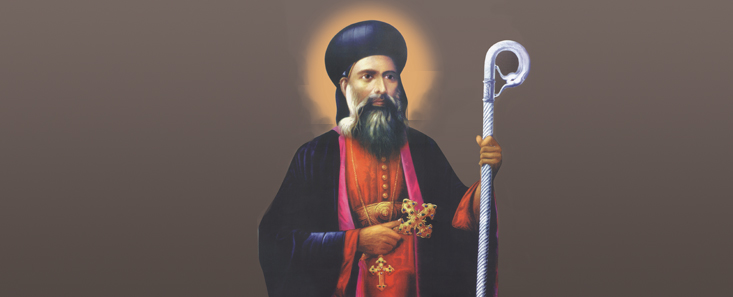
In the malayalam years 1067 and 1077, the church was graced by the presence of Parumala Thirumeni. In 1067, during a meeting called together by the holy father, it was decided that the tithe shall be paid for at the rate of two units of rice by weight (idangazhi) for every unit of land by area (para), and from this revenue, the construction of the church building was commenced. In 1077, upon revisiting the church, he was exceedingly happy to see that the church building had been completed.
He drew up plans for the Maalika Muri (Multi-storied building adjoint to the church for offices) and also issued bulls (kalpanas) to construct a western cross and a western wall.
The Holy Father was taken into heavenly abode in 1902. To loving memory of this saint, our church commemorates its primary feast on November 3rd every year.
The concern that the saint displayed toward our church and the love and respect that we have for the Holy Father cannot be described by mere words. It was his initiative that led to the construction of a church building. The seed he planted has sprouted, grown, and borne fruit, for which our church is ever indebted to him.
Apart from just the church, we can say without a doubt that this entire land is witness to the divine presence thataccompanied him. His word and his command were truly brought forth in holiness.
This land which once lay parched, with scarcely any water to drink, let alone cultivate crops, was blessed by the father. He prayed that the Periyar river flow our way, and that our harvest increase by thirty, sixty, even a hundredfold! Let us thank him for making our fields fruitful by his word, and let us pray for his continued intercession.
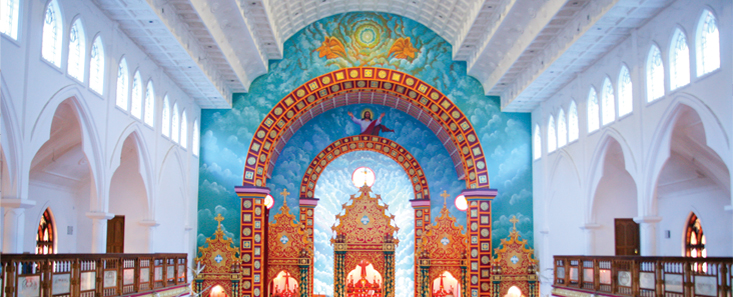
At the spot where the old place of worship was located, now stands a beautiful church designed by renowned architect Santhosh John. With the blessings of H.H The Patriarch of Antioch, a penta-mass was held on 16 Jan 2005, after which the building was formally declared established by H.B Baselios Thomas I. Around 2 crore rupees was spent to build the church up from its foundation stone to the way it stands now.
On 27 Oct 2008, the then-patriarch His Holiness Ignatius Zakka I Iwas conducted the sacrament of Holy Mooron, in the presence of H.B Baselios Thomas Iand respected metropolitans. On that very day, our church was deemed a "Valiya Palli". It was during the jubilee celebrations in 2011, that our church was elevated to the status of 'Cathedral'
The Mazhuvannur Cathedral today stands proudly in the picturesque village of Mazhuvannur, northwest of Kolenchery in Ernakulam district. Belonging to the Perumbavoor section of the Angamaly diocese, the Mazhuvannur church is a structural and architectural wonder, and is among the prominent churches in Malankara, both in terms of size as well as beauty.

The Syrian Orthodox Church, from the blessed moments of its apostolic establishment by St Peter, has unwaveringly maintained the truth Christian faith.
With all due reverence and respect to our able leader His Holiness The Patriarch Of Antioch, as well as to His Beatitude The Catholicose Of All The East, we are proud to declare that our church has completed 150 years ofsubservience and unconditional obedience to them, and all the Metropolitans they have appointed under them, in protecting the Faith of the Holy Church.
Our land has been graced by the feet of the Holy Father, the pinnacle of purity Chathuruthil Geevarghese Mar Gregorios, and has been witness to many divine miracles.
Upon this joyous occasion where our humble church is celebrating its 150th jubilee on Mazhuvannur soil,the Holy Patriarch has graciously seen fit to elevate our church to a 'Cathedral' status.
At this moment, as our proud churchtops reach up toward the endless heights of the sky, let us submit ourselves to the Will of God, and praise Him as one for His endless mercies.
Back in those days, there were no convenient transportation facilities the way we have now. People relied on small boats and makeshift vehicles to ferry them across fields, rivers and streams. Reaching the church of Kadamattom on time for worship, and carrying their dead brethren for burial was a problem for the believers. Neglect and hostility from the local communities also created issues.
It so happened that Matthew Daniel from the Nedumburatthu family was ordained as deacon (Corooyo) by the Antioch delegateMar Joachim Cyril (Yuyakim Mar Koorilose), completed his theological education and was later ordained priest (Kasheesha)by Pulikkottil Joseph Mar Dionysius. However, due to the aforementioned hostility of local communities, it was only after a long periodof time that the reverend priest was able to perform the Holy Mass at the Kadamattom church. The 300-odd people who had accompanied the priest to Kadamattom church on that day collectively decided to avoid suchcircumstances in the future, by leaving Kadamattom church and establishing a place of worship in Mazhuvannur. Maadapparambil Vadakkekkara Varkey, Thekkekkara Tharavaattil Maatthu, Thaamarappalli Maadapparambil Kuruvilla Maani, Shraambikkal Puthenpurayil Kuru, Nedumburatthu Maatthu, Mangalatthu Paily, and Thattaayatthu Paily were among the frontmen in this initiative.
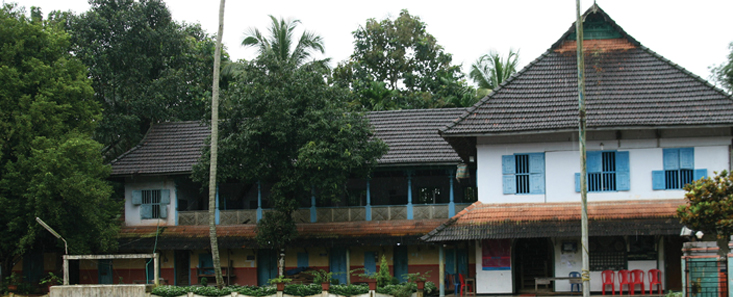 0
0
In the malayalam year 1086, Venappadathu Rev. Fr. P M Thomas established the St. Thomas Sunday School. Subsequently, he also established sunday schools in 7
other churches.
He also set up a centre to coordinate between these sunday schools, and eventually got them affiliated to the Malankara Sunday School Association.
There are over 350 students in our sunday school, making it among the most prominent in Malankara.
The sunday school has proudly completed a hundred years since its commencement.
.jpg)
Sunday School
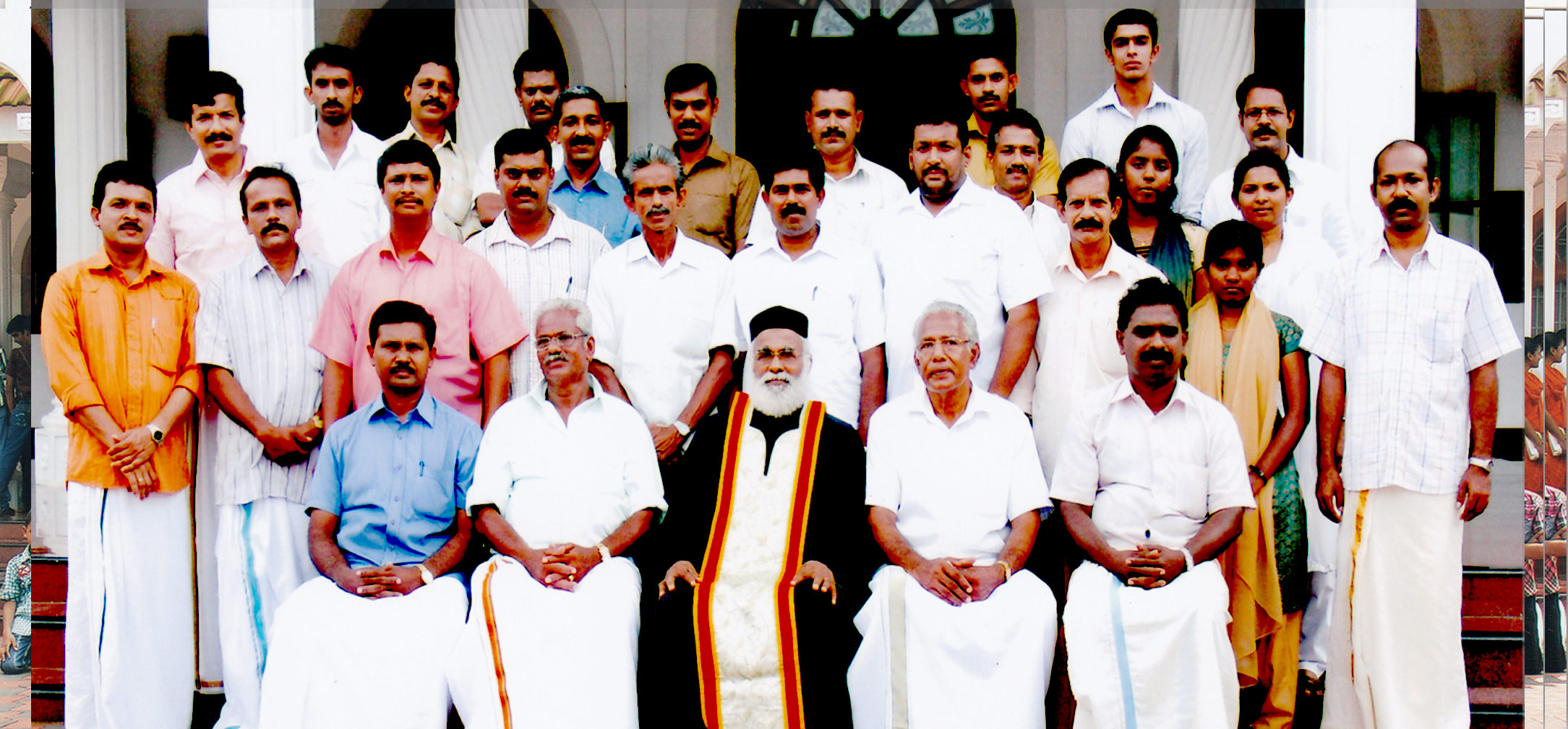
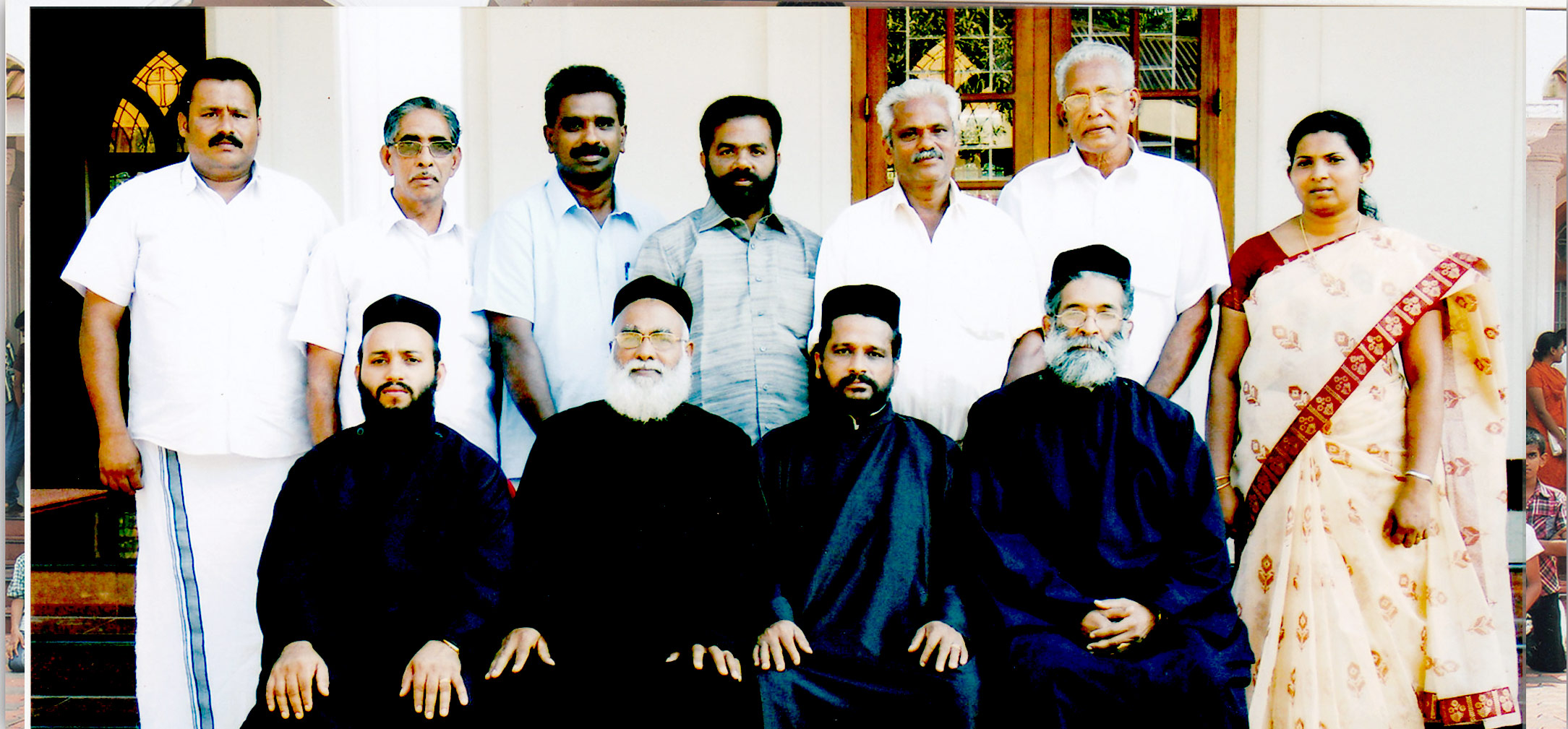
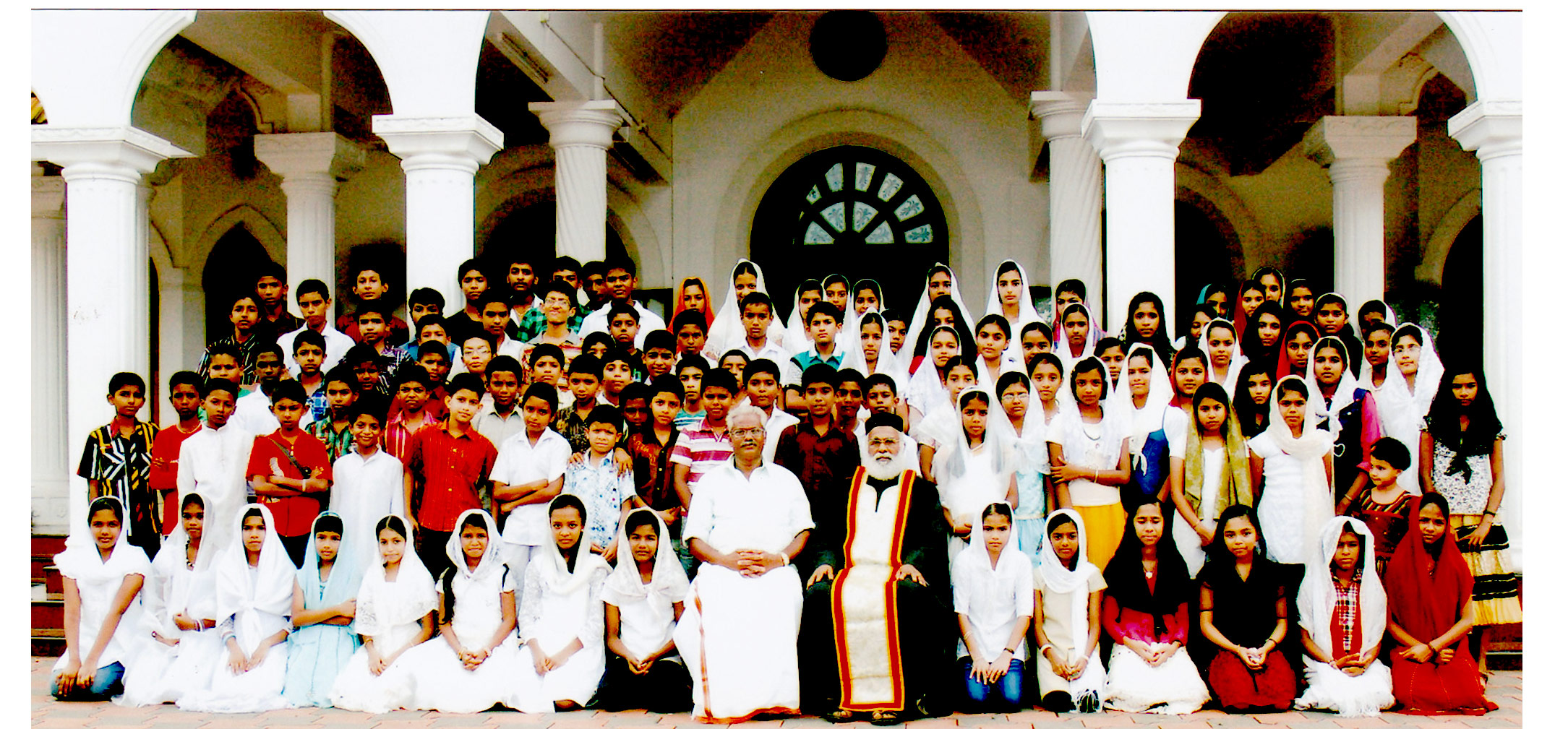
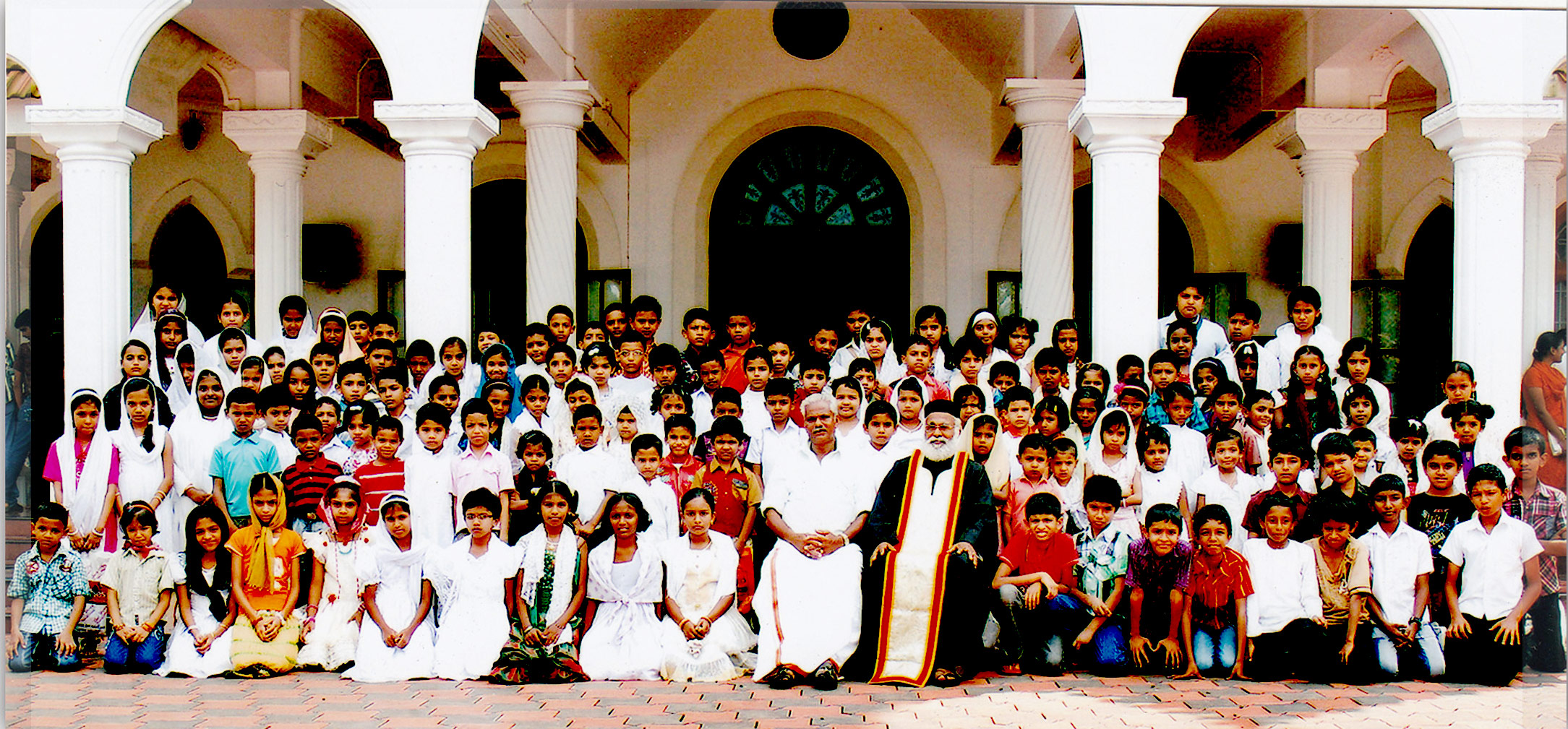
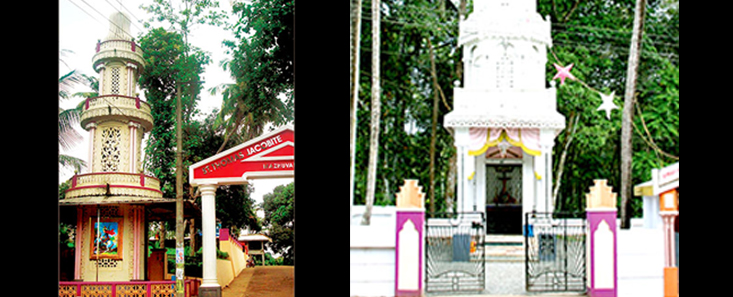
The church has two chapels: The St. Mary's Chapel in Thattaamkulam, and the St. George Chapel in Mangalatthunada.
The one in Thattaamkulam has been beautifully renovated recently, while the latter is currently undergoing reconstruction.
The sunday school and other church-accorded organizations are functioning well in both chapels.
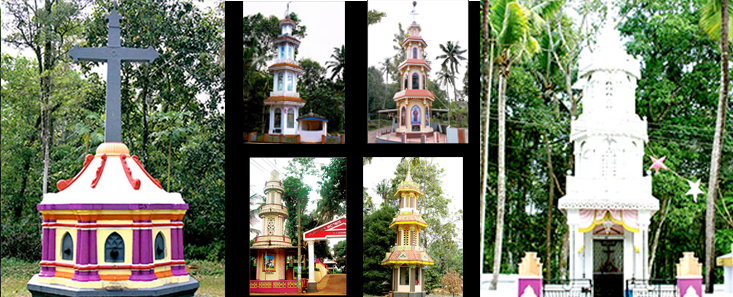
There are six cross-mounts under the direct control of the church (called kurishin thotti in malayalam).
As per the instruction of Chathuruthil Thirumeni, the Maadapparambil family built the stone cross to the west of the church.
The Kulangaattil family constructed and donated the eastern cross-mount in memory of St. Baselios Eldho, with the help of the local people who were actually from other religions.
Maadapparambil Baby M Matthew Tharakan donated the land for the cross mount on Library Junction, in memory of St. Peter And St. Paul.
The help received from Shri M R Shankarawarrier during the initial setup of this cross-mount is worth commemorating.
At the crossroads to the north of the church, the Medanappilli cross-mount was established in honour of Aluva's Valiya Thirumeni.
The finances for the construction of this cross and mount was obtained by selling land donated by Kombanaal Paily Korath.
The Ezhupratthil cross-mount in memory of Parumala Thirumeni was established on the land donated by Maanaatth Elias, with the help of the locals and church members.
The lower cross-mount to the north of the church was constructed in honour of St George the martyr, and was completed using church funds.
Apart from the aforementioned, the church also possesses four other cross-mounts adjacent to the chapels.
The sunday school, the gospel association, the women's forum, and the youth association are active functions of the church.
They participate in matters of construction and charity, and also promote spiritual growth in the church. The 24 family units of the church play an important role in strengthening the church.
In accordance with a registered agreement in 1919, and the general body meeting of 1964, as well as important diocesan-level decisions taken in 2002, our church declares its unconditional subservience to The Holy See Of Antioch, and extends all its support in preserving the true faith.
The church management committee consists of 20 members elected through secret ballot from the 20 wards of the church, from whom are nominated two trustees and a secretary approved by the general body of the church. The vicar and associate vicars are also involved in management.
The tenure for the committee members has been fixed at 2 years.
His Holiness The Patriarch has graced our church with his apostolic blessings, his visit, the sacrament of mooron, as well as the 'cathedral' status.
We declare to him our utmost gratitude and offer our unceasing reverence and respect.
We also thank His Beatitude The Catholicose Of All The East as well as the synod secretary His Grace Joseph Mar Gregorios, and the Metropolitan of the Perumbavoor area of Angamaly diocese, His Grace Matthews Mar Aphrem. We cannot express in mere words the extent of our gratitude. Above all, we thank The Lord Almighty, The Most Merciful One.
With humble and prayerful hearts,
The Editorial Board.
The founding vicar of our church is Rev. Fr. Matthew Daniel.
Starting from 1861, he served the church for 43 years until his death on 20 May 1904.
Following this, it was Venappaadatthu Simon Daniel who served the church and took the initiative for constructing the church building. He was loved by all the church members. In AD 1876 he was instated as associate vicar to Fr. Matthew Daniel, and later served as vicar until he passed away in 1918.
Rev. Fr. Matthai Geevarghese Kulangaattil was a priest for our church from 1888 onward for 20 years. He passed into heavenly abode in 1908 and was entombed on the church premises.
After the death of Kulangaattilachen, H.H Sleeba Mar Osthatheos instructed two priests from Kuruppampady Marthamariyam Church to assist Fr. Simon Daniel in serving the church. Thus, it came to pass that Fr. M. P. Matthew Marangaattu and Fr. Thomas Menotthumaalil served our church during the years 1909-1916.
Fr. Sraambikkal Puthenpurayil P A Poulose was a mentor to our church from the time he became priest in 1913 till he died and was entombed here, in 1935.
After the death of Venappaadathachen in 1918, Sleeba Mar Osthatheos who was in Kerala as the Antiochian representative took over the governance of our church for quite a while and initiated many important changes in that period. It was during this time that the relics of Mar Kauma were established in our church. His tomb continues to be a spiritual refuge for thousands, even today. Devotees get the opportunity to honour his relics during the feast on July 3rd.
In 1918, Osthatheos Bava convened a general meeting to appoint the managing body of the church. A shift in authority was observed, from the hands of all priests in general, to the specific vicars and committee of each year. Along with this, two trustees were appointed: Maadapparambil Kuruvilla Mani and Ezhippram Maadapparambil Varghese Tharakan. A constitution was drafted by Bava with the help of the trustees of that time, firmly rooting the church under the Patriarchal See of Antioch. On 30 November 1919, the church agreement was registered before the Kunnatthunaadu sub-registrar.Following this, the church began to grow rapidly, both socially and spiritually.
